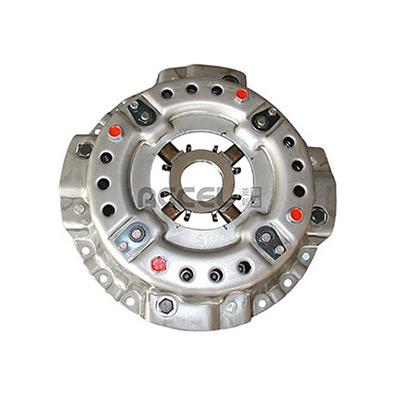- Arabic
- French
- Russian
- Spanish
- Portuguese
- Turkish
- Armenian
- English
- Albanian
- Amharic
- Azerbaijani
- Basque
- Belarusian
- Bengali
- Bosnian
- Bulgarian
- Catalan
- Cebuano
- Corsican
- Croatian
- Czech
- Danish
- Dutch
- Afrikaans
- Esperanto
- Estonian
- Finnish
- Frisian
- Galician
- Georgian
- German
- Greek
- Gujarati
- Haitian Creole
- hausa
- hawaiian
- Hebrew
- Hindi
- Miao
- Hungarian
- Icelandic
- igbo
- Indonesian
- irish
- Italian
- Japanese
- Javanese
- Kannada
- kazakh
- Khmer
- Rwandese
- Korean
- Kurdish
- Kyrgyz
- Lao
- Latin
- Latvian
- Lithuanian
- Luxembourgish
- Macedonian
- Malgashi
- Malay
- Malayalam
- Maltese
- Maori
- Marathi
- Mongolian
- Myanmar
- Nepali
- Norwegian
- Norwegian
- Occitan
- Pashto
- Persian
- Polish
- Punjabi
- Romanian
- Samoan
- Scottish Gaelic
- Serbian
- Sesotho
- Shona
- Sindhi
- Sinhala
- Slovak
- Slovenian
- Somali
- Sundanese
- Swahili
- Swedish
- Tagalog
- Tajik
- Tamil
- Tatar
- Telugu
- Thai
- Turkmen
- Ukrainian
- Urdu
- Uighur
- Uzbek
- Vietnamese
- Welsh
- Bantu
- Yiddish
- Yoruba
- Zulu
Dec . 31, 2024 17:14 Back to list
Exploring the Versatility and Applications of High-Quality Rubber Belts in Industry
The Versatile World of Rubber Belts
Rubber belts are an indispensable component in numerous industries, ranging from manufacturing to agriculture, automotive to mining. Their versatility and durability make them an essential tool for a variety of applications. As synthetic and natural rubber technologies advance, these belts continue to evolve, offering enhanced performance and solving specific operational challenges.
At the core of the functionality of rubber belts is their structure, which typically includes multiple layers of rubber, fiber, and sometimes metal. They are designed to be flexible yet strong, capable of handling heavy loads and withstanding harsh conditions. The main types of rubber belts include conveyor belts, V-belts, timing belts, and flat belts, each fulfilling unique needs depending on the operational requirements.
Conveyor Belts The Backbone of Industry
Conveyor belts, perhaps the most recognizable type of rubber belt, play a vital role in the transportation of materials across various sectors. From moving raw materials in a manufacturing facility to transporting finished products to shipping areas, these belts enhance efficiency and productivity. Modern conveyor belts are engineered for specific tasks, featuring different surface textures, widths, and lengths tailored to particular applications. For instance, food-grade conveyor belts must comply with safety and hygiene standards, while mining belts are designed for strength and resilience to harsh environments.
V-Belts and Timing Belts Power Transmission
V-belts are commonly used in machinery to transmit power between shafts. Their unique trapezoidal shape allows for a secure grip on pulleys, making them highly efficient in power transfer. Meanwhile, timing belts offer precise synchronization between rotating components, which is crucial in applications like automotive engines. The advancement in materials, including the use of high-strength synthetic fibers, has improved the durability and performance of these belts, making them more effective in demanding conditions.
Flat Belts The Classic Choice
rubber belts

Flat belts have been in use for centuries and remain relevant today due to their simplicity and versatility. They are mainly used in driving applications where a smooth surface contact is essential. Their ability to operate quietly and with minimal vibration makes them a preferred choice in specific environments, such as in HVAC systems or textile production lines. Innovations in materials have led to flat belts that minimize stretch and increase lifespan, making them a reliable option for many industries.
Impact on Sustainability
As industries continue to prioritize sustainability, rubber belts are also adapting. Many manufacturers are now focusing on producing eco-friendly belts made from recycled materials or sustainable rubber sources. This shift not only helps reduce the environmental footprint but also meets the growing demand for sustainable industrial solutions.
Maintenance and Lifespan
Despite their durability, rubber belts require regular maintenance to ensure optimum performance. Regular inspections for signs of wear, proper tension adjustments, and alignment checks are crucial. Neglecting these maintenance tasks can lead to premature failures, affecting the efficiency of operations. Understanding the lifespan of these belts, which can vary from a few months to several years depending on the type and usage, is also essential for planning replacements and minimizing downtime.
Conclusion
Rubber belts are a testament to the ingenuity of industrial design, combining flexibility with strength to meet the diverse needs of various sectors. From conveyor belts that streamline operations to timing belts that ensure precision in automotive engines, they serve as the backbone of modern industry. As technology evolves alongside a commitment to sustainability, rubber belts will continue to be a vital component in the machinery and infrastructure that power our world. Their significance will only grow as we strive for greater efficiency and reduced environmental impact in our industrial processes.
-
Korean Auto Parts Timing Belt 24312-37500 For Hyundai/Kia
NewsMar.07,2025
-
7PK2300 90916-T2024 RIBBED BELT POLY V BELT PK BELT
NewsMar.07,2025
-
Chinese Auto Belt Factory 310-2M-22 For BMW/Mercedes-Benz
NewsMar.07,2025
-
Chinese Auto Belt Factory 310-2M-22 For BMW/Mercedes-Benz
NewsMar.07,2025
-
90916-02660 PK Belt 6PK1680 For Toyota
NewsMar.07,2025
-
drive belt serpentine belt
NewsMar.07,2025

